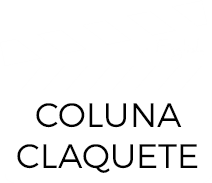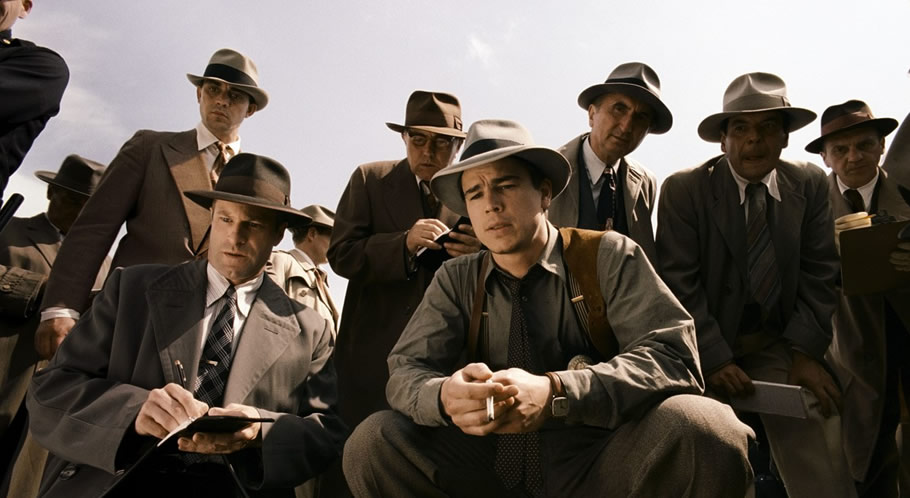The Black Dahlia

Colorful Noir
A film, to be considered a classic, needs to be special. In the specific case of “The Black Dahlia” (USA, 2006), there was a combination of several factors: cinema noir, James Ellroy’s story and Brian de Palma’s direction, practically a perfect storm. But, let’s go in parts, as Jack the Ripper would say.
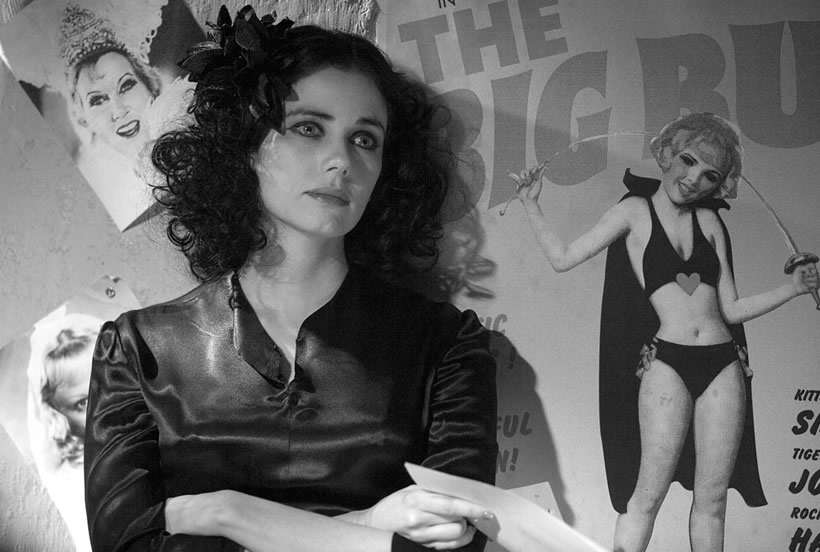
The expression cinema noir emerged after the Second World War, through French critics, referring to American police movies, produced since 1940. As main characteristics of the genre, we can mention the direct influence of the police literature of the Depression years, which featured as main characters tough cops of dubious morality, femmes fatales, evil villains, intricate investigations in their plots. Graphically, the atmosphere is always obscure, with scenes full of shadows (hence the word noir, which means black in French) and black and white photography, mostly.
Classic film noir include “The Maltese Falcon” (USA, 1941), “Touch of Evil” (USA, 1958), “Sunset Boulevard” (USA, 1950), and “Vertigo” (USA, 1958), among others. The genre heyday was in the 40d and 50d. Subsequently, several films were made using characteristics of this style, such as “Chinatown” (USA, 1974), “Pulp Fiction” (USA, 1994), “L.A. Confidential” (USA, 1997), and the film we will talk about, “The Black Dahlia”. A common point of the last two, besides the genre, is that they are based on books by James Ellroy, one of the most important authors of American police literature.
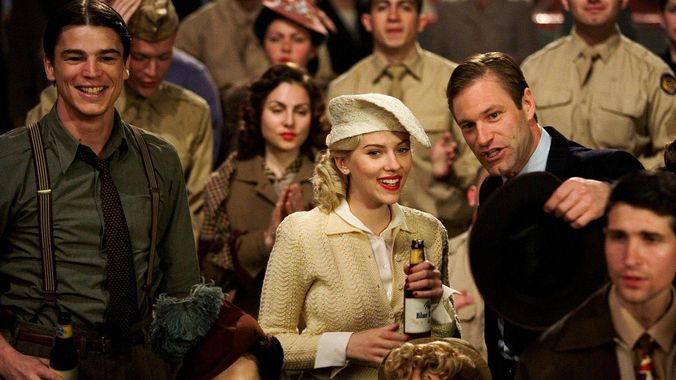
“The Black Dahlia” is based in a real event, the brutal murder of a young woman in Los Angeles in 1947. The body of the young Elizabeth Short, who is played in the film by Mia Kirshner, had been found cut in two without blood, removed different organs, and with mutilation marks. The name “Black Dahlia” was given due to the film “Dália Azul”, released a year before the crime, and which dealt with the investigation of a mysterious murder.
In charge of the investigation of this crime are two policemen, Bucky (Josh Hartnett) and Lee (Aaron Eckhart). The two, besides being policemen, became famous for being boxers, and became famous thanks to a publicity stunt, with a boxing fight to facilitate the approval of funds for the police. In return, both won the promotion for detectives. The other element in common between the two was Kay (Scarlett Johansson), one former prostitute who lives with Lee, but is very afraid because his old pimp is about to get out of prison.
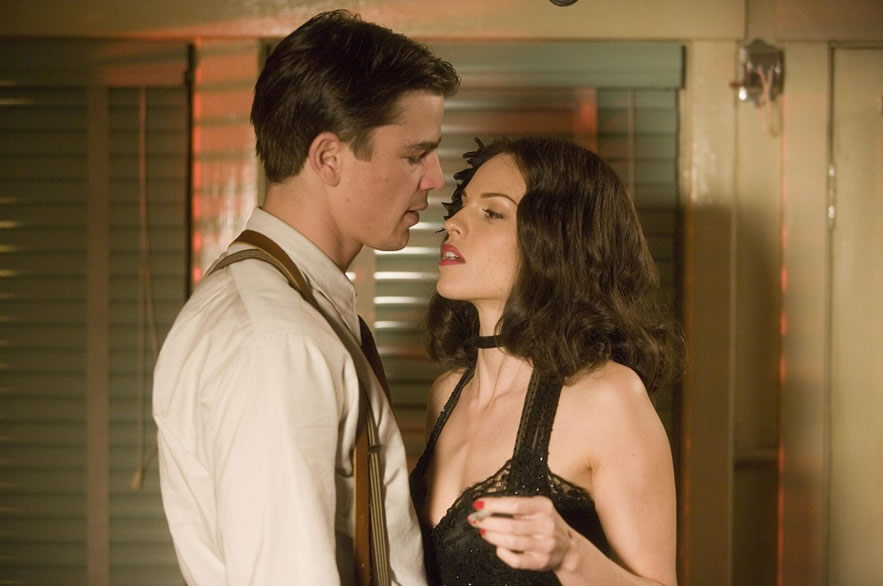
During the investigation, the detectives know Madeleine Linscott (Hilary Swank), a mysterious and seductive woman of high society, who loves to dress like femme fatale, as Elizabeth Short did, besides having great similarities with her. As a backdrop, the city of Los Angeles shows its not so angelic side, displaying their hidden face of prostitution, drugs, government and corporate corruption, etc.. No one here is perfect, and even the police, all have some dirt to hide under the carpet.
The cast is very good, highlighting the female characters, which is another characteristic of Brian De Palma. Scarlett Johansson, Mia Kishner and mainly Hilary Swank are very comfortable in their roles. Exquisite photography, period reconstruction and the soundtrack signed by Mark Isham are also highlights of the movie.
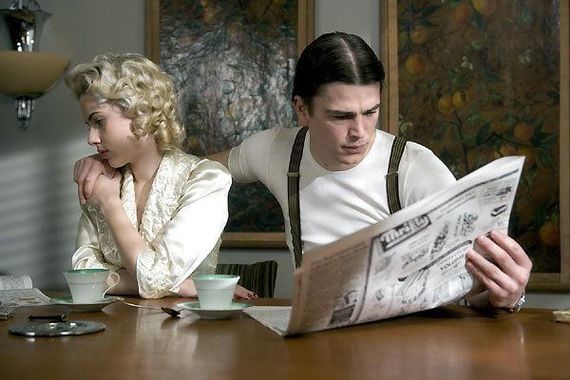
Brian De Palma became famous due to suspense films he directed, starting with the surprising “Carrie” (USA, 1976). From more than forty films that he directed, the best known are “Phantom of the Paradise” (USA, 1974), “Dressed to Kill” (USA, 1980), “Body Double” (USA, 1984), “The Untouchables” (USA, 1987), “Mission: Impossible” (USA, 1996) and “Mission to Mars” (USA, 2000). The hallmarks of the director’s films are the intricate plots, the sensuality of the characters, and the perfect match between the soundtrack and the images. In his two productions, “Femme Fatale” (FRA, 2002) and “The Black Dahlia”, he introduced elements of cinema noir.
Although he paid tribute to cinema noir, De Palma adapted his film to current tastes. The story, although dense, is not so complex as to be unintelligible. The spectator is required more attention and patience than in the usual productions, but nothing that sounds absurd. The director’s boldness, which showed a long lesbian scene at the opening of “Femme Fatale”, is much more contained in “The Black Dahlia”, despite showing homosexual characters and environments.
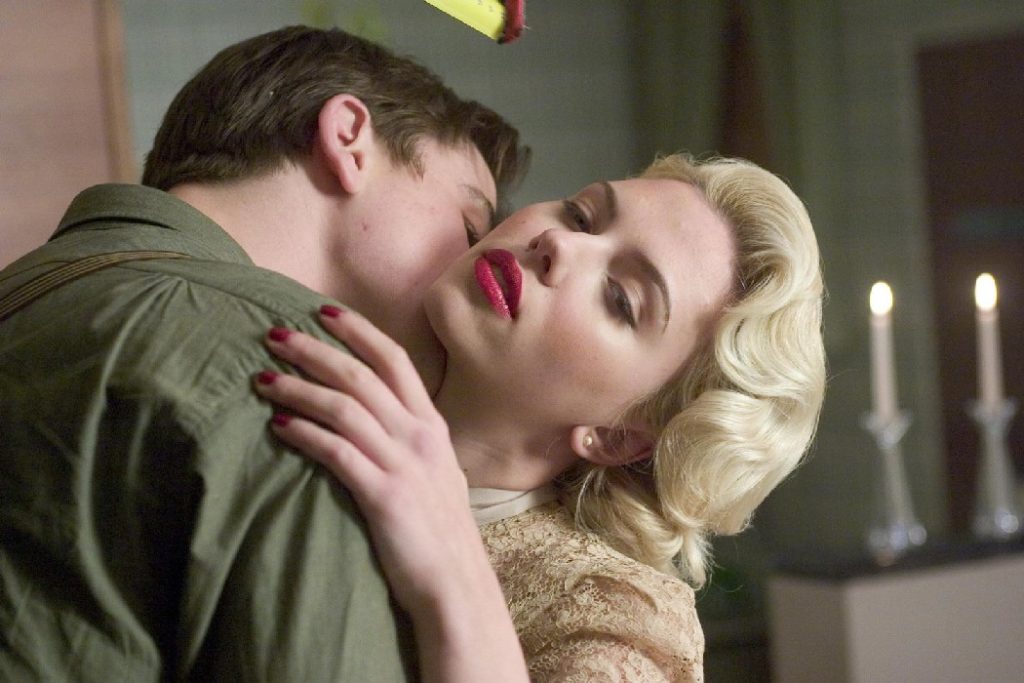
Do not wait for the usual popcorn cinema, of the wonderful hero, shot-beat-and bomb style, while kissing the immaculate girl. “The Black Dahlia” is a dense police story, with “human” characters (in the worst sense, unfortunately), and a plot full of interesting angles. It is worth revisiting.
